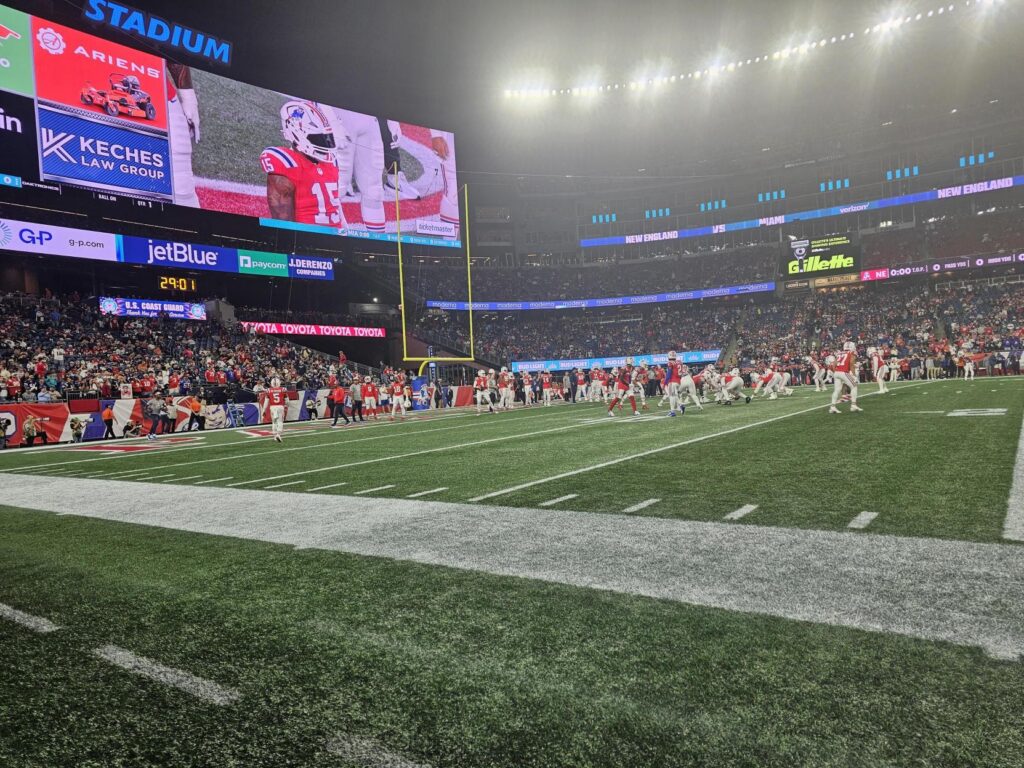

Fans watch sports and support their favorite teams, play along with fantasy sports and feel the pain when their favorite athlete goes down with an injury. But what does the athlete do if they get hurt on the job?
In Massachusetts and a handful of other states, professional athletes can – and do – claim workers’ compensation benefits for injuries sustained during their careers.
Read on to learn more about how injuries during slam dunks, slap shots, touchdowns and home runs could lead to workers’ compensation.
Workers’ Compensation for Professional Athletes
If employees get injured or sick at work, workers’ compensation offers them medical expenses, lost wages, disability payments and even the cost to rehabilitate or retrain them. But what happens when your job involves body checks, first downs, or alley oops? Turns out it depends on the state.
Under Massachusetts law, an “employee” is every person in the service of another under any contract of hire, express or implied, oral or written.
In Massachusetts, workers’ comp benefits extend to professional athletes, recognizing that their careers come with extraordinary risks, and sometimes those careers can come to a sudden halt due to injuries suffered in the line of duty.
>> Keches Law Group Named Official Law Firm of the New England Patriots
When Can Professional Athletes Collect Workers’ Compensation Benefits?
In 2020, NFL players experienced 1.73 injuries per 100 plays, totaling just over 800 injuries.
Whether these 800 professional athletes can receive workers’ compensation depends on the contract they have with their team.
In many instances, NFL contracts stipulate that if a player sustains an injury on the field, they will remain on the team with pay throughout their work-related injury.
This situation is what Massachusetts law is referring to when it excludes “persons employed to participate in organized professional athletics, while so employed, if their contracts of hire provide for the payment of wages during the period of any disability resulting from such employment” from classification as employees.
In these situations, workers’ compensation is not an available remedy.
Former Chicago Bears Running Back Matt Forte received a substantial settlement for injuries. In fact, since 2000, the Bears have shelled out millions to players like Forte, Brian Urlacher, Devin Hester and Charles Tillman. These claims typically involve injuries like neck issues, back problems, knee injuries, wrist ailments, and more.
It’s worth noting a critical difference between these cases and those involving head injuries. With acute injuries, such as a sprained ankle or a dislocated shoulder, team doctors can often pinpoint the moment in a game when the injury occurred. This clarity makes it easier to establish a direct link between the injury and the game.
However, not all NFL contracts contain such guarantees. If a team releases a player without pay following injury, they may be eligible for workers’ compensation and should consult with an experienced attorney to learn more about their rights and available remedies.
Legal Challenge Examples
Workers’ compensation for athletes is particularly complicated when it comes to head injuries. Some athletes have waged a legal battle to secure compensation for a range of injuries, including those linked to head trauma.
But workers’ comp claims related to head injuries can be an uphill battle. It’s hard to show that a head injury is directly related to play and former players have encountered mixed outcomes when seeking compensation for injuries tied to their careers.
>> I think I Have a Concussion. What Should I do?
Vikings Player’s Struggle
Al Noga, who played for the Minnesota Vikings from 1988-1992, received a settlement from the team for orthopedic issues developed during his career in 2004. But when he was diagnosed with dementia in 2015, his claim was denied.
“Noga played for the Vikings from 1988 to 1992, but medical awareness of the connection between and among head injuries, possible concussions, and the potential long-term neurological effects of those events had not yet developed,” Justice Natalie Hudson wrote in the court’s opinion.
Originally, a compensation judge sided with Noga, but the Vikings appealed multiple times, and eventually the Minnesota State Supreme Court reached the decision to deny Noga Workers’ Compensation.
>> 5 Steps to Take After Hitting Your Head
California Workers’ Compensation Law
Meanwhile, between 2008-2015, 434 NHL players filed for and received workers’ compensation over injuries suffered during play. Of those players, 377 had suffered head injuries. All of these claims were filed in California because the state had a law in place until 2014 allowing players to file a claim if they believed their injury worsened while playing in the Golden State.
California eventually changed the law when it became clear athletes from out of state had essentially had California pay their workers’ comp because their state wouldn’t.
“We found that there were a billion dollars in claims that were being filled out by out-of-state workers against out-of-state employers and they all turned out to be professional athletes,” said Henry Perea, former California State Assemblyman.
But it wasn’t just NHL players. In fact, more claims were actually made by football and baseball players.
>>Legal Guide to Traumatic Brain Injury Claims
Bears Want to Restrict Benefits
In Illinois, the Chicago Bears and other sports franchises have lobbied for a rule change that would restrict former players’ access to workers’ comp benefits, especially if they’ve sustained career-ending injuries. Teams fear the financial burden for years of payments and possible insurance hikes.
The rule would mean benefits would only be granted to players aged 35 or younger and only for 5 years after the injury occurred.
Why Would a Professional Athlete Need Access to Workers’ Compensation?
Not all professional athletes make millions of dollars.
The 2021 minimum salary for NFL practice squad players is $9,200 a week during the season. NFL players are only paid during the season. Throughout the 18-week regular season, this adds up to $165,000.
While $165,000 per year is certainly no small sum of money, the injuries professional football players are prone to can be quite costly.
In particular, contact sport players are especially susceptible to brain injuries. Repeated brain injury can lead to chronic traumatic encephalopathy, better known as “CTE.” Such conditions can have grave financial consequences.
According to Northwestern University, “The lifetime costs of a patient’s treatment for a traumatic brain injury are estimated to run from $85,000 to $3 million.”
Hurt on the Job? Keches Law Group Can Help.
Professional athlete or not, at Keches Law Group, we understand the impact work-related injuries can have on your family.
Our attorneys are part of a passionate team that will handle your workers’ compensation case from beginning to end
If you or a loved one has sustained an injury while on the job, contact us today.




